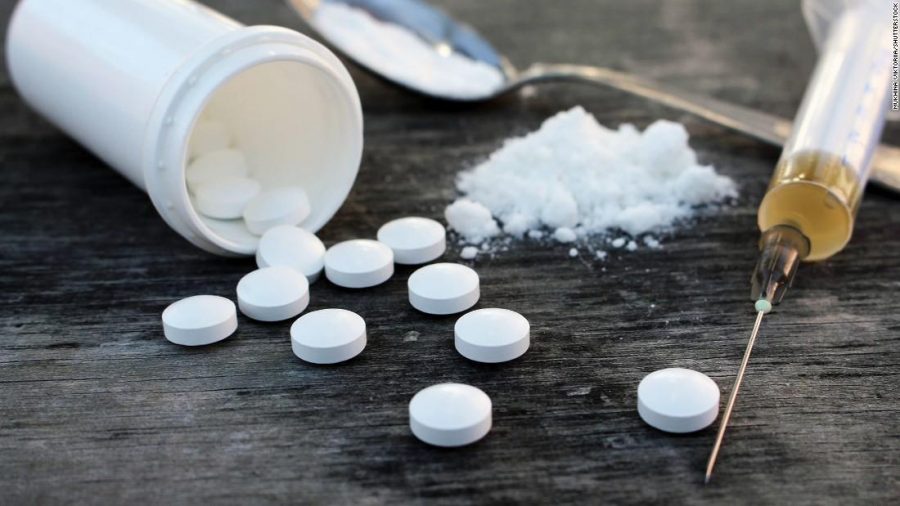America’s Opioid Crisis
America’s opioid epidemic, and how we are trying to find a solution
March 30, 2018
Addiction to opioids is a major health threat that many Americans are facing. Opioids are used for pain relief, and they are usually prescribed by a doctor. Yet many people misuse the drug for recreational use. Some common opioids include: Heroin, Oxycodone, Fentanyl, Morphine, Methadone, Vicodin, and many more. Opioids are useful if taken in the recommended amount prescribed by a health professional. But large amounts are dangerous and even life threatening.
How do Opioids Affect the Brain?
Our brains make our own small amounts of opioids to naturally battle pain. However, it is still a small amount, so the opioids in your body can’t help relieve pain like a prescribed opioid can. When you take an opioid, you feel a sense of euphoria. The drugs also slow the respiratory system and create a calming feeling. The euphoria is caused by a rush of dopamine. Dopamine is a chemical that is released by neurons in your brain when you are happy. The human brain is wired to keep you wanting to do things that make you happy or feel good. So when a person takes a form of opioids, their brain remembers how it made them feel. Thus, they continue to keep using the drug. Sometimes people feel nausea while under the influence of opioids because of the way opioids affect the brain.
Long term use of these drugs causes a person to develop a tolerance. A tolerance is when you have to take more of the substance to get the same desired effect. Excessive use of these drugs can create a dependency, which then leads to an addiction.
Statistics
/cdn.vox-cdn.com/uploads/chorus_asset/file/8761583/drug_overdose_deaths_world.jpg)
- In 2016 there were over 42,000 deaths due from opioid overdoses.
- 40% of opioid deaths involved a prescribed opioid.
- More than three out of five drug overdoses involved an opioid.
- Opioid overdose deaths were five times higher than in 1999.
Federal Response
Our government has started to come up with ways to battle this problem. So far, we have better addiction prevention, treatment, and recovery services. We have also conducted better research and have more information and data about pain management.
The National Institute of Health (NIH) is launching a proposal in three different research areas about the opioid crisis: overdose reversal, addiction treatment, and pain management.
Rehabilitation Centers Close to Home
- Nile Addiction Recovery Treatment – 4185 Lexington Rd,Versailles, KY, Phone: 859) 873-9277 Website: http://www.nilebabies.org/index.html
- NEW DAY RECOVERY CENTER – 2647 Regency Rd #101, Lexington, KY, Phone: 859) 277-4357
- The Lexington Center for Opioid Dependence – 2375 Professional Heights Dr #210, Lexington, KY Phone:(859) 317-9159 Website: http://www.thelexingtoncenter.com/
Hotlines
- The Recovery Village: https://www.therecoveryvillage.com/drug-rehab/drug-abuse-hotline/#gref
- https://drugabuse.com/library/drug-abuse-hotlines/
- Recovery.org: https://www.recovery.org/topics/addiction-recovery-helplines/


